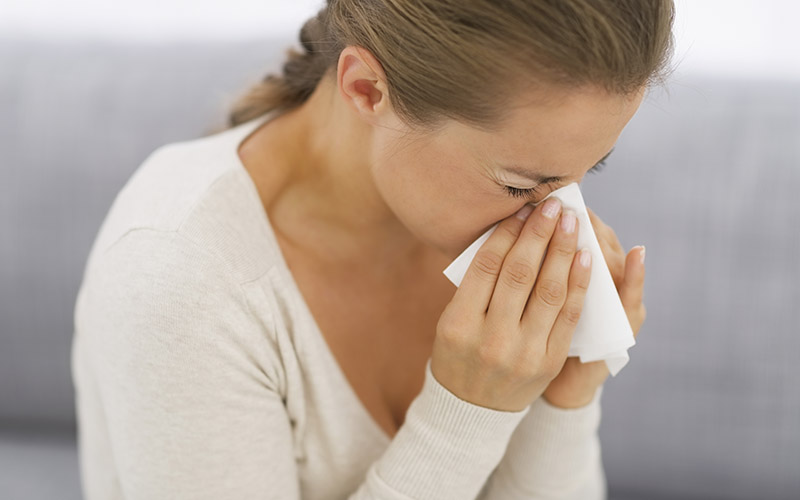Are you experiencing allergy-like symptoms at home but not exhibiting them when you’re outside? If so, your home likely has poor indoor air quality. There are myriad pollutants that can worsen your home’s air quality and impact your health, including dust, pet dander and microbial growth. You don’t have have to let particulate matter make you feel sick, though. Here’s how to eliminate pollutants in your home to improve air quality.
Change the HVAC System’s Filter Often
The air filter in your HVAC system is your first line of defense against harmful particles circulating in your home. As the HVAC system operates, it filters many of the most common pollutants. But if it becomes clogged, it can’t do its job. You should change your HVAC system’s air filter every 90 days to maintain good indoor air quality. If you own pets or suffer from asthma or allergies, change it every month. As a result, you’ll help to ease attacks and symptoms.
Use a Vacuum With a HEPA Filter
A high-efficiency particulate air (HEPA) filter can remove at least 99.97 percent of particles that have a diameter greater than or equal to 0.3 microns from the air that passes through it. While hospitals and other facilities that require extensive contamination control use these types of filters in their HVAC systems, residential units aren’t designed for it. But you can purchase a vacuum that uses a HEPA filter. By doing so, you’ll suck more particles up when cleaning.
Invest in a Whole-Home Air Purifier
Most air purifiers also contain a HEPA filter. Things devices are great for breathing cleaner air. For example, the Trane CleanEffects™ Whole-House Air Cleaner is up to 100 times more effective than a standard HVAC filter and up to 99.98 percent efficient at removing particle pollutants in your home’s air supply. You can either use a portable air purifier in a single room where you experience the worst allergy-like symptoms or a whole-home model to purify your entire home.
Decorate Your Home With Air-Filtering Plants
NASA conducted a Clean Air Study in 1989 to research ways to clean the air in a space station. The results showed that certain indoor plants can provide a natural way of removing toxic agents like formaldehyde, benzene and trichloroethylene from the air. These indoor plants work most effectively when you place one per 100 square feet of space. Here are some of the indoor plants you should consider adding to your living spaces for cleaner air:
- English ivy*
- Peace lily*
- Bamboo palm
- Red-edged dracaena*
- Barberton daisy
- Florist’s chrysanthemum*
*These plants are toxic to your furry friends, including cats and dogs.
Install an Energy Recovery Ventilator
Stale indoor air won’t only make you feel uncomfortable during the day and disturb your sleep at night. It’s also a breeding ground for microbial growth. While balancing your humidity between 40 and 60 percent is important, you also need good ventilation in your home. An energy recovery ventilator (ERV) works with your HVAC system to exhaust stale indoor air while drawing fresh air from outside and preconditioning it before it enters your living spaces.
Schedule an Indoor Air Quality Inspection
Are you still having trouble maintaining good indoor air quality in your home? Whether you’re experiencing allergy-like symptoms or noticing things like microbial growth, there are plenty of signs to warn you of poor IAQ. To get to the root of the problem and resolve your IAQ issues, schedule a professional indoor air quality inspection.
Howell-Chase Heating & Air Conditioning performs indoor air quality inspections. Our comfort specialists will work with you to locate and eliminate any sources that are contributing to poor IAQ. Contact us at 843-350-1478 for fast and friendly service. We look forward to helping you breathe easier and improving your family’s quality of life.
Image provided by Thinkstock








